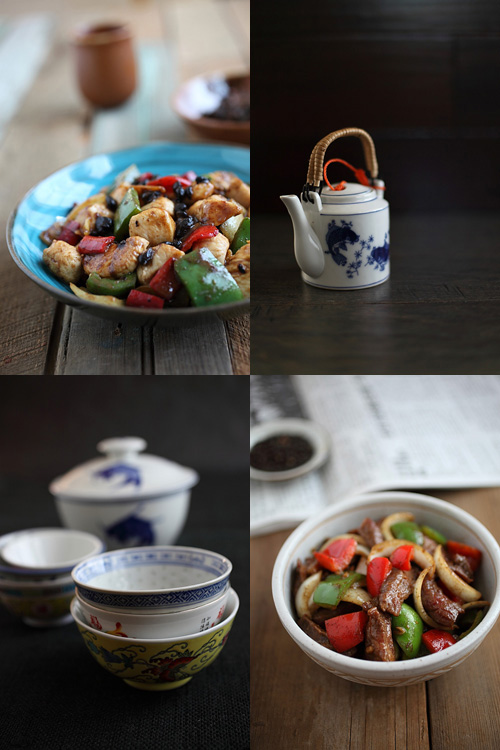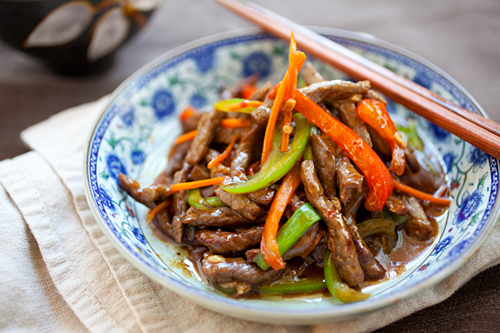Hi everyone!
My name is Bee and I am a best-selling cookbook author (Easy Chinese Recipes, Tuttle, 2011) and a food blogger. I specialize in Asian cuisines, especially Chinese food. I am a huge fan of SAN-J sauces, especially its legendary soy sauce, tamari, and I am extremely humbled—and honored—to be writing articles for this blog.
Here are some basics and techniques that I’d like to share with you to make a delicious and authentic Chinese stir-fry dish at home.
Stir-frying is one of the fundamental techniques of authentic Chinese cooking, one that you ought to master if you want to make homemade Chinese food at home. If you have had real and authentic Chinese or Cantonese food in restaurants, I am sure you know that a great stir-fry dish beckons like no other, with flash cooked, glossy ingredients in a light but utterly savory and delicious sauce. The aroma of the food is both tempting, mouthwatering and you can’t wait to dig in.
Unlike Japanese cooking, there are basic distinctions in authentic Chinese stir-fries. Here are my quick tips and tricks in mastering the skill:
- You may use a wok, skillet, or pan for stir-frying, but the utensil must be fully heated before stir-frying so as to create “wok-hei” (breath of wok) for the dish.
- Be generous with oil as you want the oil to fully coat the bottom surface of the wok, skillet, or pan. You can’t do a proper stir-fry dish if you skim on oil.
- All ingredients called for in the recipe—meat, seafood, tofu or vegetables—should be cut or sliced into uniform pieces or cubes to make sure that they are cooked evenly. Spread the ingredients in a single layer to ensure even cooking.
- Chinese stir-fries are generally prepared with a light and savory sauce. Soy sauce is most commonly used. If soy sauce is called for in the recipe, I recommend using SAN-J Tamari or SAN-J Shoyu. An authentic Chinese stir-fry dish shouldn’t be soaked in gloppy and sticky sauce; the sauce should be light, nicely coat and cling to the ingredients in the recipe.
- A Chinese spatula (preferably steel) is a very important utensil. Use the spatula to stir and toss the ingredients in a back and forth, circular, turning, and/or flipping motions.
- Last but not least, do not overcook the ingredients. The ingredients should be just cooked through. The meat should be silky and velvety; the vegetables shouldn’t be overly wilted or mushy.
There you have them, the essentials of mastering the art of Chinese stir-frying.



